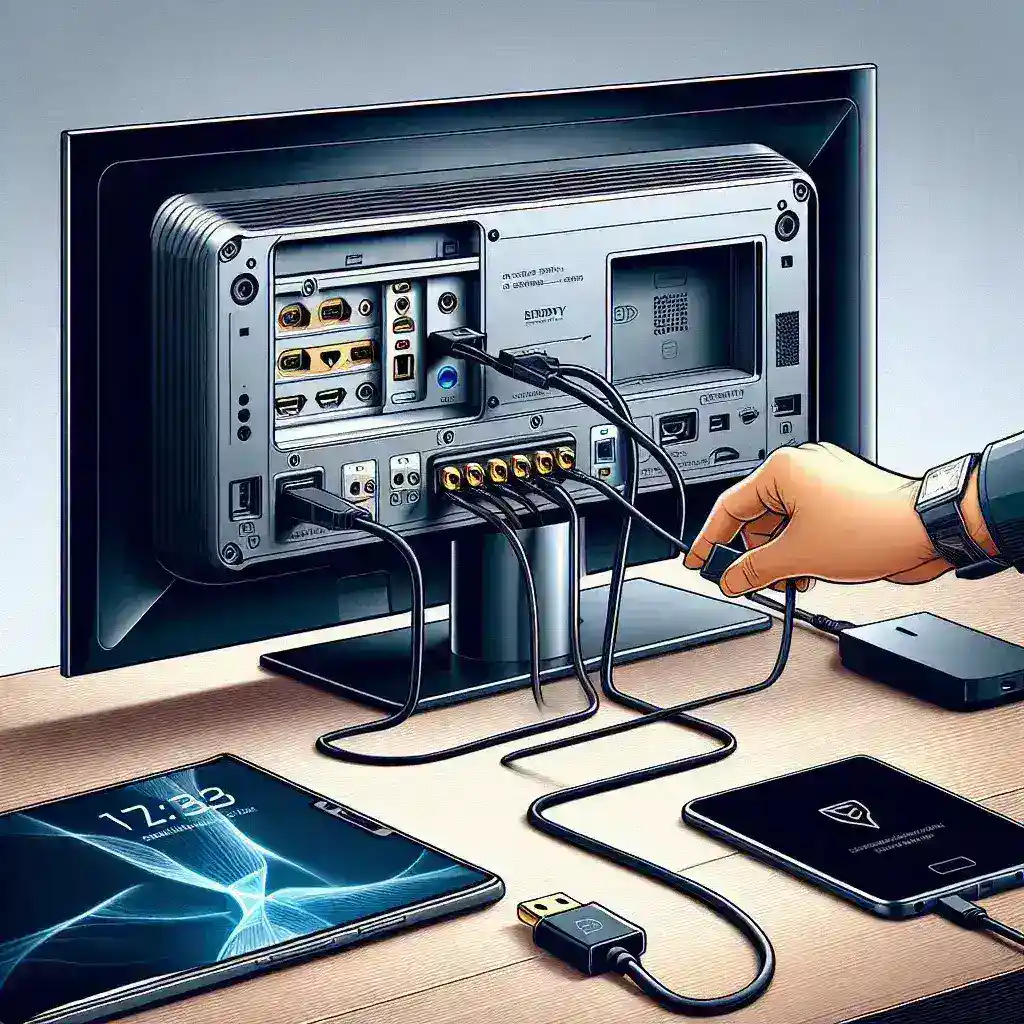Introduction
With the rapid advancement in technology, it has become easier than ever to connect various devices for a seamless experience. Connecting your smartphone to a plasma monitor can enhance your viewing experience by displaying content such as photos, videos, presentations, and more on a larger screen. This article will guide you through the steps to connect a plasma monitor to a smartphone.
Methods to Connect a Plasma Monitor to a Smartphone
There are several ways to connect your smartphone to a plasma monitor. Here, we discuss the most popular methods, including:
- HDMI Cable
- Wireless Mirroring
- USB-C to HDMI Adapter
- MHL (Mobile High-Definition Link)
- Chromecast
1. HDMI Cable
One of the simplest methods to connect your smartphone to a plasma monitor is through an HDMI cable. This method provides a stable and high-quality connection. Most modern plasma monitors come with one or more HDMI ports. However, since smartphones do not have an HDMI port, you will need an adapter or a special cable.
| Required Items | Details |
|---|---|
| HDMI Cable | A standard HDMI cable |
| Adapter | HDMI to Micro-USB or USB-C adapter |
Steps:
- Purchase an HDMI to Micro-USB or USB-C adapter based on your smartphone’s port.
- Connect the HDMI cable to the plasma monitor.
- Attach the other end of the HDMI cable to the adapter.
- Plug the adapter into your smartphone.
- Set the plasma monitor to the correct HDMI input; your smartphone screen should now be mirrored.
2. Wireless Mirroring
For those who prefer a wireless connection, wireless mirroring is an excellent option. This method requires a Wi-Fi connection and a compatible plasma monitor or a wireless display adapter.
Steps:
- Ensure both your smartphone and plasma monitor are connected to the same Wi-Fi network.
- On your smartphone, go to the settings and enable the screen mirroring option (the terminology may vary depending on the smartphone brand).
- Select your plasma monitor from the list of available devices.
- Accept the connection request on your plasma monitor if prompted.
- Your smartphone screen should now be mirrored on the plasma monitor.
3. USB-C to HDMI Adapter
Many modern smartphones come with a USB-C port, which can serve multiple functions, including video output. A USB-C to HDMI adapter can establish a direct connection between your smartphone and the plasma monitor.
Steps:
- Purchase a high-quality USB-C to HDMI adapter.
- Connect the HDMI cable to the plasma monitor.
- Plug the other end of the HDMI cable into the USB-C to HDMI adapter.
- Insert the adapter into the USB-C port of your smartphone.
- Switch your plasma monitor to the correct HDMI input.
- Your smartphone screen should be mirrored on the plasma monitor.
4. MHL (Mobile High-Definition Link)
MHL is a technology that allows mobile devices to connect to high-definition displays. However, not all smartphones support MHL, so it is essential to check the specifications of your device first.
| Required Items | Details |
|---|---|
| MHL Adapter | Check compatibility with your smartphone |
| HDMI Cable | A standard HDMI cable |
Steps:
- Determine if your smartphone supports MHL technology.
- Buy an appropriate MHL adapter compatible with your smartphone.
- Connect the HDMI cable to the plasma monitor.
- Attach the other end of the HDMI cable to the MHL adapter.
- Plug the MHL adapter into your smartphone.
- Power up the MHL adapter if it requires external power.
- Change your plasma monitor to the proper HDMI input.
- Your smartphone screen should now appear on the plasma monitor.
5. Chromecast
Google’s Chromecast is another popular method to wirelessly stream content from your smartphone to a plasma monitor. This device plugs into the HDMI port of your monitor and allows you to cast content from your smartphone via Wi-Fi.
Steps:
- Purchase a Chromecast device.
- Plug the Chromecast into the HDMI port of your plasma monitor.
- Configure the Chromecast using the Google Home app on your smartphone.
- Ensure both devices are on the same Wi-Fi network.
- Open the app or content you wish to cast and select the cast icon.
- Select your Chromecast device from the list.
- The content on your smartphone should now be mirrored on the plasma monitor.
Tips for a Smooth Viewing Experience
- Ensure Stable Wi-Fi: For wireless methods such as screen mirroring or Chromecast, a stable Wi-Fi connection ensures better quality and fewer interruptions.
- Use High-Quality Adapters: Invest in quality adapters and cables to avoid signal loss or compatibility issues.
- Keep Software Updated: Ensure your smartphone and plasma monitor firmware are up to date for the best compatibility and performance.
- Adjust Display Settings: Depending on the connection method, you may need to tweak display settings on your smartphone or monitor for optimal viewing.
Conclusion
Connecting a plasma monitor to a smartphone can significantly enhance your viewing experience, whether for personal or professional use. By following the methods and steps outlined in this guide, you should be able to connect your devices effortlessly. Choose the method that best suits your requirements and enjoy your content on a larger screen.

